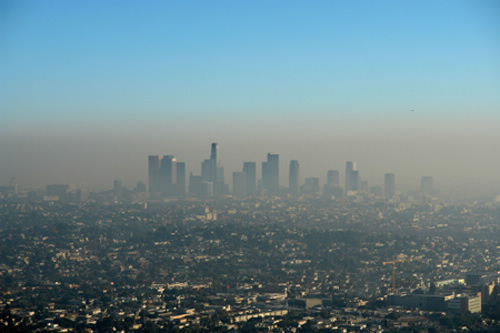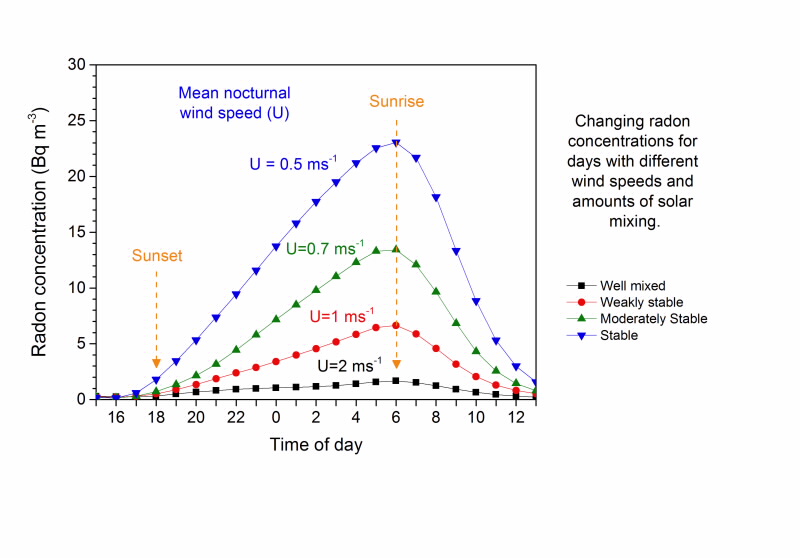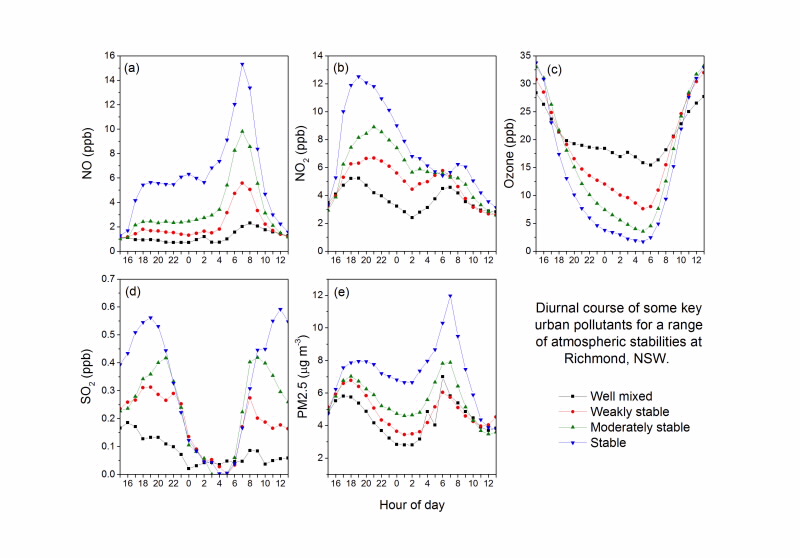The amount of air pollution that city residents are exposed to depends mainly on three things: (1) how much pollution is emitted, (2) how fast it reacts or gets removed from the air, and (3) how high into the atmosphere it gets mixed (the dilution).
 |
Depending on the time of day, the mixing height of pollution can change dramatically, which has a direct impact on the concentration – or perceived severity – of a pollution event.
During winter in Sydney, for example, smoke from household fireplaces, factory emissions, and peak-hour traffic exhaust combine in the morning “inversion layer” (a shallow, stable layer of air near the ground) resulting in a visible brown haze that dissipates later in the morning as solar heating helps to mix the air more deeply.
In order to improve our ability to predict future levels of pollution, and to help quantify efforts to reduce pollution emissions, we need to improve our understanding of how “atmospheric stability” (or mixing depth) changes pollution levels near the ground.
Until recently, even our most advanced and expensive meteorological techniques have only been able to provide a “rough indication” of the behaviour of air pollution concentrations under a range of different atmospheric stabilities (mixing states).
Recently, however, ANSTO researchers Dr Scott Chambers and Dr Alastair Williams have developed a novel way of using radon (222Rn) – a natural, radioactive gas uniformly emitted by rocks and soils – to categorise atmospheric stability more accurately than has ever been achieved before.
 |
Using radon detectors designed and built at ANSTO – and presently recognised as the best in the world – members of the Atmospheric Mixing & Pollution Transport group (of the Institute for Environmental Research, IER) have been able to relate changes in radon concentration over the course of a day to degrees of atmospheric mixing by the sun and wind.
Applying these relationships, in turn, to simultaneous measurements of various urban pollution emissions has resulted in the most comprehensive understanding, to date, of the changing atmospheric mixing state on urban pollution concentrations.
 |
Shortly after these initial findings were published as a discussion paper in Atmospheric Chemistry and Physics (http://www.atmos-chem-phys.net/15/1175/2015) the Atmospheric Mixing & Pollution Transport group received offers for research collaborations in China, Korea, Italy, France and Switzerland.
The first of several proposed publications in collaboration with the Beijing office of the China Meteorological Administration has already been accepted to Atmospheric Environment, where radon observations were used to quantify the effects of atmospheric stability on urban and industrial emissions in Lanzhou, one of China’s most polluted cities.
An investigation seeking to find ways to reduce public exposure to vehicle-emitted benzene in Bern, Switzerland, is also well underway.


